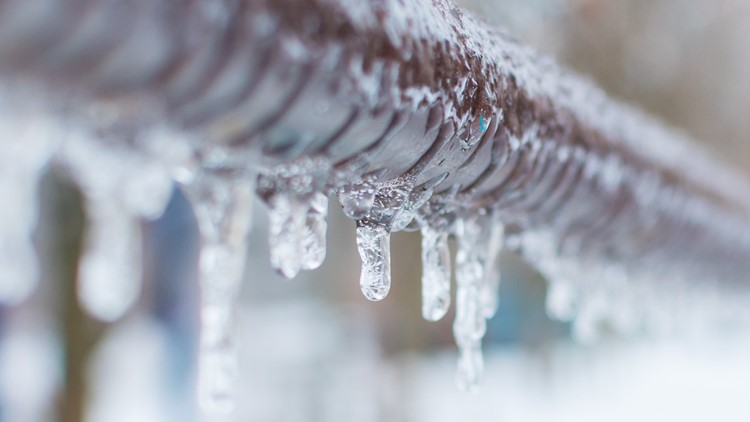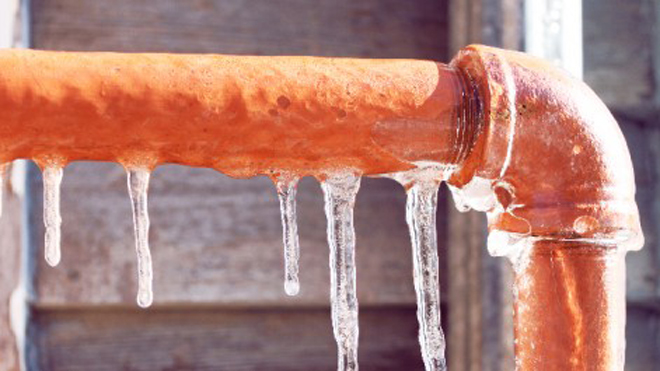How to Avoid Frozen Pipes in Winter: Professional Tips
How to Avoid Frozen Pipes in Winter: Professional Tips
Blog Article
They are making several good annotation related to Preventing and dealing with frozen pipes in general in this content which follows.

Winter can damage your pipes, specifically by freezing pipelines. Below's exactly how to stop it from taking place and what to do if it does.
Introduction
As temperature levels decline, the danger of frozen pipes increases, potentially bring about pricey repair work and water damage. Recognizing just how to avoid icy pipes is critical for home owners in cool climates.
Understanding Frozen Pipelines
What creates pipes to freeze?
Pipes ice up when subjected to temperatures below 32 ° F (0 ° C) for extended periods. As water inside the pipes ices up, it expands, taxing the pipeline wall surfaces and potentially creating them to burst.
Threats and problems
Frozen pipelines can cause supply of water disturbances, property damage, and costly repairs. Burst pipelines can flood homes and cause substantial structural damage.
Indicators of Frozen Pipeline
Recognizing frozen pipelines early can stop them from bursting.
Exactly how to identify icy pipes
Look for decreased water circulation from taps, unusual smells or noises from pipes, and visible frost on revealed pipelines.
Avoidance Tips
Shielding prone pipelines
Wrap pipes in insulation sleeves or utilize heat tape to secure them from freezing temperatures. Focus on pipelines in unheated or exterior areas of the home.
Heating methods
Keep indoor rooms appropriately warmed, specifically areas with pipes. Open cabinet doors to permit cozy air to flow around pipes under sinks.
Protecting Exterior Plumbing
Yard hoses and outdoor taps
Disconnect and drain pipes yard hoses before winter. Install frost-proof spigots or cover outdoor faucets with protected caps.
What to Do If Your Pipelines Freeze
Immediate actions to take
If you think frozen pipes, maintain taps available to soothe stress as the ice melts. Utilize a hairdryer or towels soaked in hot water to thaw pipelines slowly.
Long-Term Solutions
Architectural changes
Think about rerouting pipes far from exterior walls or unheated locations. Add added insulation to attics, cellars, and crawl spaces.
Upgrading insulation
Buy premium insulation for pipelines, attic rooms, and walls. Correct insulation aids maintain consistent temperatures and minimizes the threat of icy pipelines.
Verdict
Preventing frozen pipes needs aggressive actions and fast feedbacks. By recognizing the reasons, indicators, and safety nets, home owners can shield their pipes during cold weather.
5 Ways to Prevent Frozen Pipes
Drain Outdoor Faucets and Disconnect Hoses
First, close the shut-off valve that controls the flow of water in the pipe to your outdoor faucet. Then, head outside to disconnect and drain your hose and open the outdoor faucet to allow the water to completely drain out of the line. Turn off the faucet when done. Finally, head back to the shut-off valve and drain the remaining water inside the pipe into a bucket or container. Additionally, if you have a home irrigation system, you should consider hiring an expert to clear the system of water each year.
Insulate Pipes
One of the best and most cost-effective methods for preventing frozen water pipes is to wrap your pipes with insulation. This is especially important for areas in your home that aren’t exposed to heat, such as an attic. We suggest using foam sleeves, which can typically be found at your local hardware store.
Keep Heat Running at 65
Your pipes are located inside your walls, and the temperature there is much colder than the rest of the house. To prevent your pipes from freezing, The Insurance Information Institute suggests that you keep your home heated to at least 65 degrees, even when traveling. You may want to invest in smart devices that can keep an eye on the temperature in your home while you’re away.
Leave Water Dripping
Moving water — even a small trickle — can prevent ice from forming inside your pipes. When freezing temps are imminent, start a drip of water from all faucets that serve exposed pipes. Leaving a few faucets running will also help relieve pressure inside the pipes and help prevent a rupture if the water inside freezes.
Open Cupboard Doors
Warm your kitchen and bathroom pipes by opening cupboards and vanities. You should also leave your interior doors ajar to help warm air circulate evenly throughout your home.

Do you like reading up on Prevent Frozen Pipes ? Put feedback below. We will be pleased to see your thinking about this blog posting. We hope that you come back again in the future. Sharing is caring. Helping people is fun. Thanks a lot for your time. Come back soon.
Or Book Technician Here Report this page